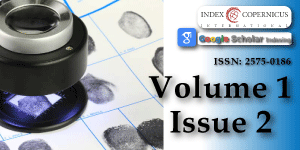Brain changes in Hypothermia: Surface-versus Core-cooling in pigs
Main Article Content
Abstract
The process of hypothermia in the clinical setting has been practiced for 50 years and is known for its neuroprotective properties. This paper describes histopathological changes either by an ice sludge mimicking accidental hypothermia (S-group n=7) or by endovascular core-cooling (C-group n=7). Focal infiltrates of neutrophilic granulocytes were found in five of seven brains in the S-group and in one of seven brains in the C-group. These granulocytes were found in the arachnoids, in vessels, in vessel walls, and in the cerebral cortex. Fungi, bacteria, lymphocytes or plasma were not found.
This experimental study, mimicking accidental hypothermia, reported histopathologic features of aseptic inflammation. To our knowledge, such findings have not been described in hypothermic animals or humans before. We suggest that a local inflammatory response may be triggered in such cases of hypothermia.
Article Details
Copyright (c) 2017 Hammersborg SM, et al.

This work is licensed under a Creative Commons Attribution 4.0 International License.
Eisenburger P, Sterz F, Holzer M, Zeiner A, Scheinecker W, et al. Therapeutic hypothermia after cardiac arrest. Curr Opin Crit Care. 2001; 7: 184-188. Ref.: https://goo.gl/brTWx9
Nilsson L, Kogure K, Busto R. Effects of hypothermia and hyperthermia on brain energy metabolism. Acta Anaesthesiol Scand. 1975; 19: 199-205. Ref.: https://goo.gl/iD6LGH
Moore EM, Nichol AD, Bernard SA, Bellomo R. Therapeutic hypothermia: benefits, mechanisms and potential clinical applications in neurological, cardiac and kidney injury. Injury. 2011; 42: 843-854. Ref.: https://goo.gl/eBMjSu
Hammersborg SM, Farstad M, Haugen O, Kvalheim V, Onarheim H, et al. Time course variations of haemodynamics, plasma volume and microvascular fluid exchange following surface cooling: an experimental approach to accidental hypothermia. Resuscitation. 2005; 65: 211-219. Ref.: https://goo.gl/6jYLBi
Farstad M, Heltne JK, Rynning SE, Lund T, Mongstad A, et al. Fluid extravasation during cardiopulmonary bypass in piglets-effects of hypothermia and different cooling protocols. Acta Anaesthesiol Scand. 2003; 47: 397-406. Ref.: https://goo.gl/a4xDMx
Lofstrom B. Induced hypothermia and intravascular aggregation. Acta Anaesthesiol Scand. 1959; 3: 1-19. Ref.: https://goo.gl/4qiox3
Endrich B, Hammersen F, Messmer K. Microvascular ultrastructure in non-freezing cold injuries. Res Exp Med. 1990; 190: 365-379. Ref.: https://goo.gl/L2hLA1
Hammersborg SM, Brekke HK, Haugen O, Farstad M, Husby P. Surface cooling versus core cooling: comparative studies of microvascular fluid- and protein-shifts in a porcine model. Resuscitation. 2008; 79: 292-300. Ref.: https://goo.gl/pxxLXa
Schwartz BG, Kloner RA, Thomas JL, Bui Q, Mayeda GS, et al. Therapeutic Hypothermia for Acute Myocardial Infarction and Cardiac Arrest. Am J Cardiol. 2012; 110: 461-466. Ref.: https://goo.gl/31wyyk
Kramer C, Freeman WD, Larson JS, Hoffman-Snyder C, Wellik KE, et al. Therapeutic hypothermia for severe traumatic brain injury: a critically appraised topic. Neurologist. 2012; 18: 173-177. Ref.: https://goo.gl/VwGsvx
Lakhan SE, Pamplona F. Application of mild therapeutic hypothermia on stroke: a systematic review and meta-analysis. Stroke Res Treat. 2012. Ref.: https://goo.gl/odrzQF
Lampe JW, Becker LB. State of the art in therapeutic hypothermia. Annu Rev Med. 2011; 62: 79-93. Ref.: https://goo.gl/ufJWiA
Delhaye C, Mahmoudi M, Waksman R. Hypothermia therapy: neurological and cardiac benefits. J Am Coll Cardiol. 2012; 59: 197-210. Ref.: https://goo.gl/x4hqv7
Kvalheim VL, Farstad M, Steien E, Mongstad A, Borge BA, et al. Infusion of hypertonic saline/starch during cardiopulmonary bypass reduces fluid overload and may impact cardiac function. Acta Anaesthesiol Scand. 2010; 54: 485-493. Ref.: https://goo.gl/Vx5uUm
Haugen O, Farstad M, Myklebust R, Kvalheim V, Hammersborg S, et al. Low perfusion pressure during CPB may induce cerebral metabolic and ultrastructural changes. Scand Cardiovasc J. 2007; 41: 331-338. Ref.: https://goo.gl/n4mkHJ
Lemasters JJ, Theruvath TP, Zhong Z, Nieminen AL. Mitochondrial calcium and the permeability transition in cell death. Biochim Biophys Acta. 2009; 1787: 1395-401. Ref.: https://goo.gl/XKEoKv
Hannon JP, Bossone CA, Wade CE. Normal physiological values for conscious pigs used in biomedical research. Lab Anim Sci. 1990; 40: 293-298. Ref.: https://goo.gl/zEz9gT
Iwata O, Iwata S, Tamura M, Nakamura T, Sugiura M, et al. Early head cooling in newborn piglets is neuroprotective even in the absence of profound systemic hypothermia. Pediatr Int. 2003; 45: 522-529. Ref.: https://goo.gl/zVEcvG
Iwata S, Iwata O, Thornton JS, Shanmugalingam S, Bainbridge A, et al. Superficial brain is cooler in small piglets: neonatal hypothermia implications. Ann Neurol. 2006; 60: 578-585. Ref.: https://goo.gl/mQQNNh
Prandini MN, Neves Filho A, Lapa AJ, Stavale JN. Mild hypothermia reduces polymorphonuclear leukocytes infiltration in induced brain inflammation. Arq Neuropsiquiatr. 2005; 63: 779-784. Ref.: https://goo.gl/xnAiHd





